Taupe living rooms strike the perfect balance between warmth and sophistication. This versatile neutral—nestled between brown and gray—adapts to a wide range of styles, from minimalist sanctuaries to rustic retreats. By thoughtfully layering textures, playing with light, and introducing complementary hues, you can elevate a simple taupe backdrop into a dynamic, inviting space. Whether you favor bold accents or prefer an all-neutral scheme, taupe provides a cohesive canvas that welcomes creativity. The following 20 ideas explore diverse approaches to styling a taupe living room, each blending function and flair to inspire your next design project.
1. Embracing Taupe as a Neutral Backdrop
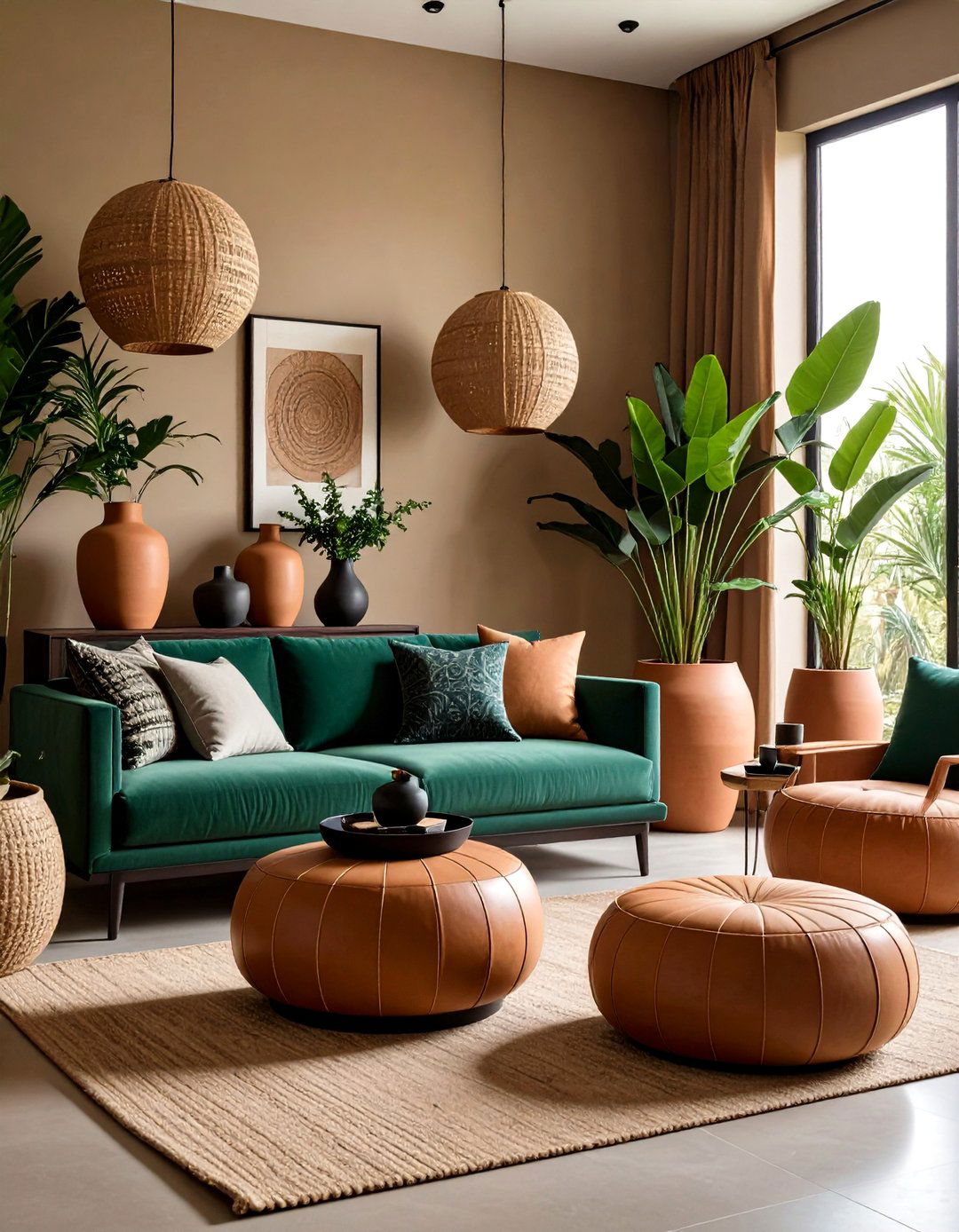
Taupe’s unique blend of warm and cool undertones makes it an ideal backdrop for living rooms seeking both elegance and comfort. This hue shifts subtly under different lights—showing warmer brownish notes during sunset and cooler gray tones under LED lighting—ensuring your space never feels static. Its neutrality allows furniture and décor pieces to take center stage without competing for attention, fostering a harmonious and balanced environment.
2. Pairing Taupe with Complementary Colors
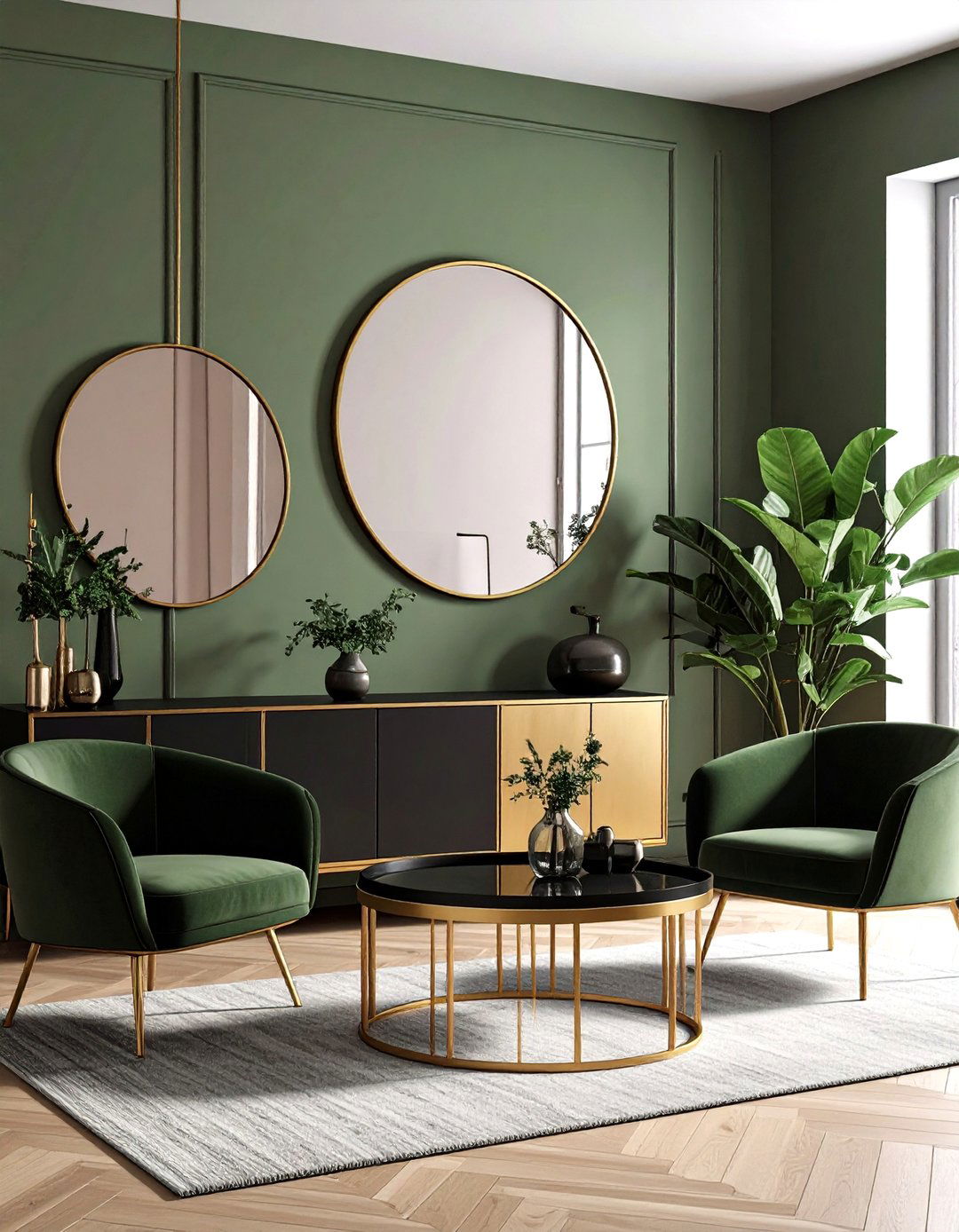
To avoid a monotonous feel, introduce complementary colors alongside taupe. Shades of muted blue or dusty lavender inject subtle vibrancy, while deep navy or charcoal add depth and sophistication. Soft whites and creams brighten the palette, ensuring the room feels airy, whereas charcoal accents provide modern contrast without overwhelming the overall warmth. Strategic pops of muted pink or olive green can further enliven the space while maintaining cohesion.
3. Layering Textures for Depth
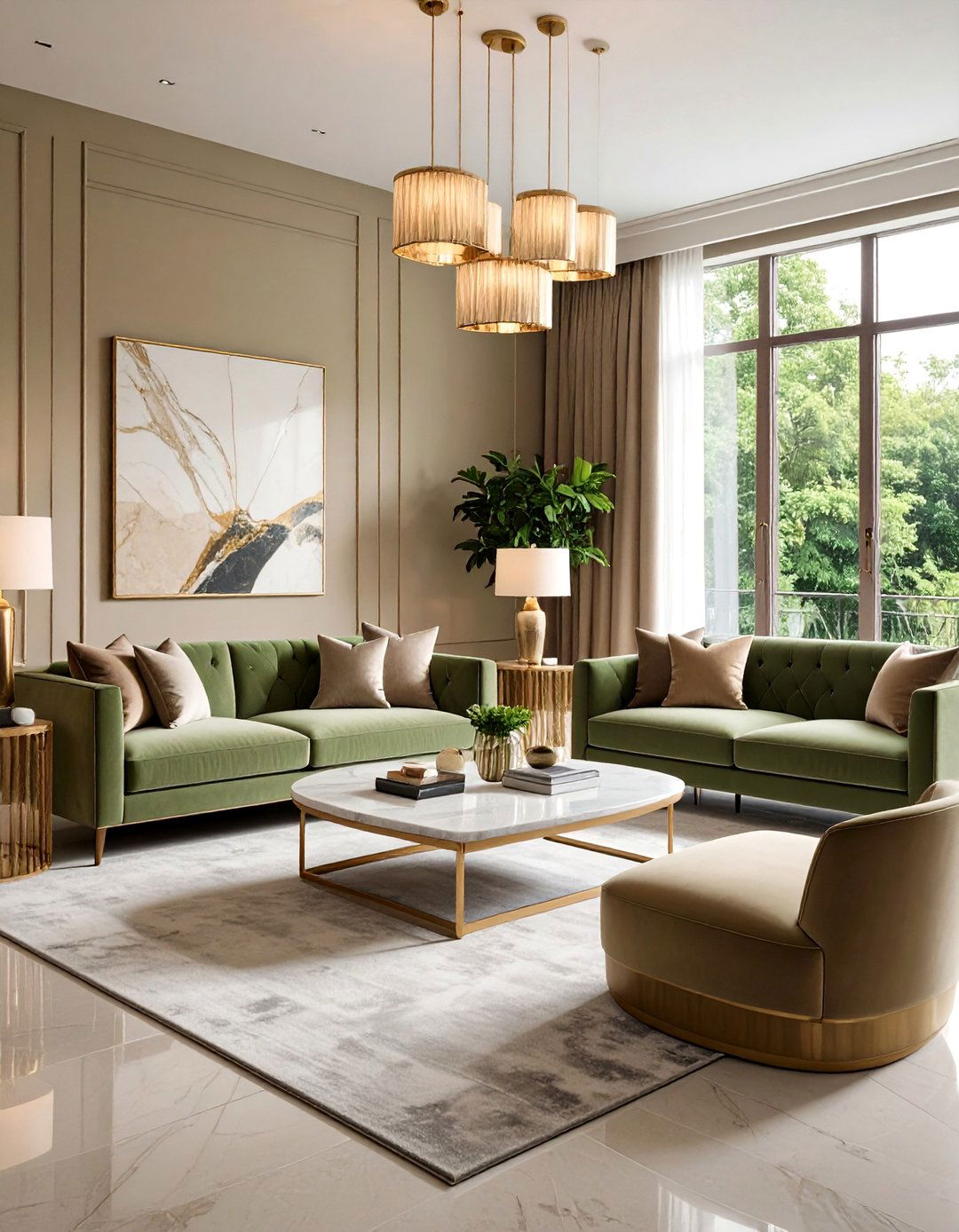
Mixing textures is key to preventing a taupe-dominated room from appearing flat. Combine plush velvet sofas with nubby wool rugs and linen throw pillows to create tactile interest. Introduce organic materials—such as rattan baskets, jute mats, or reclaimed wood coffee tables—to counterbalance smoother surfaces. This interplay of soft and rough elements adds dimension, encouraging the eye to move across the space and appreciate each detail.
4. Optimizing Lighting to Enhance Undertones
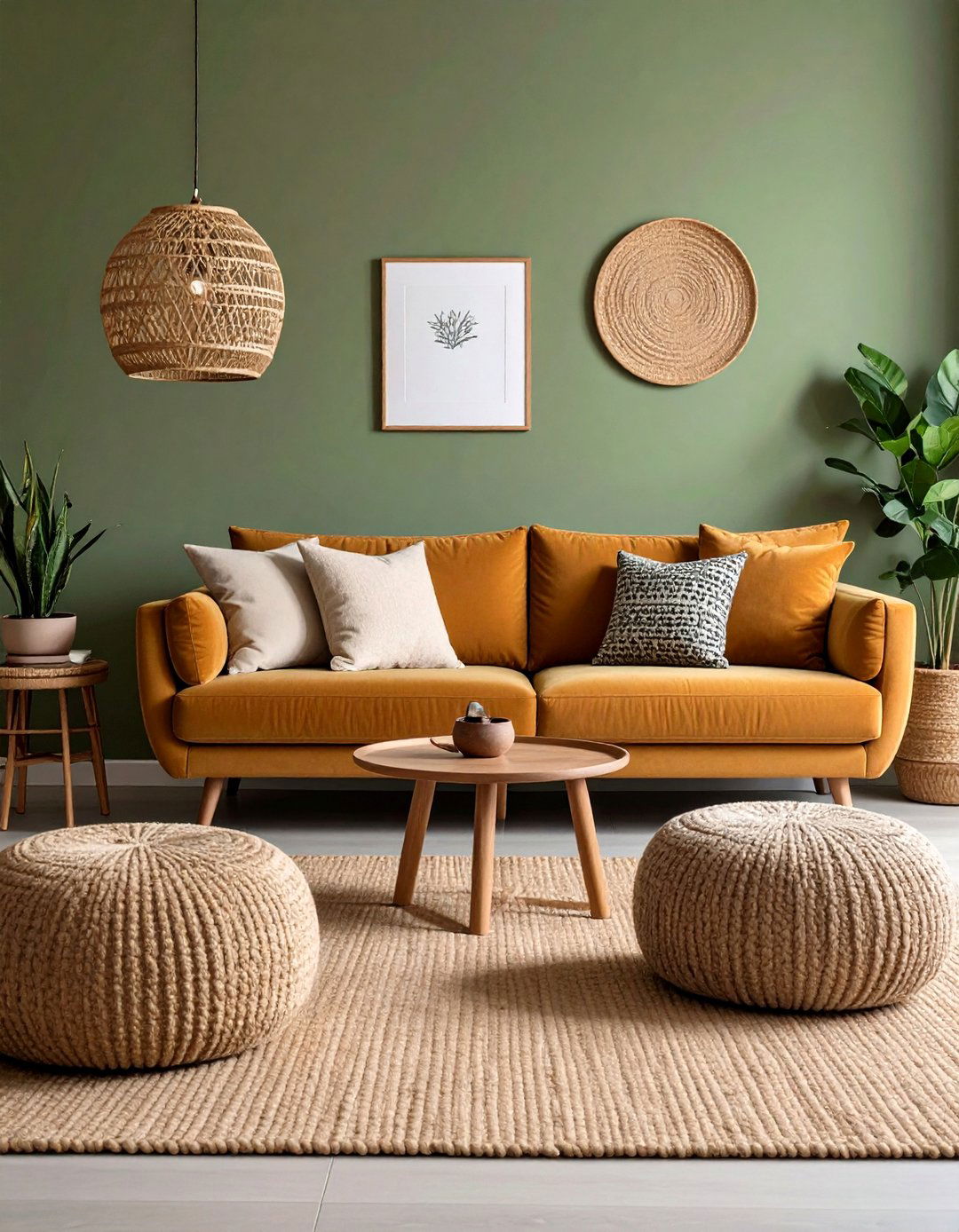
Lighting profoundly influences how taupe appears. In rooms with limited natural light, opt for warm-toned bulbs and layered fixtures—overhead pendants, floor lamps, and wall sconces—to highlight the hue’s subtle warmth. Dimmers allow you to adjust brightness and ambiance for different times of day. Position light sources to minimize shadows on walls, ensuring the taupe paint reads consistently across the room.
5. Incorporating Accent Colors Strategically
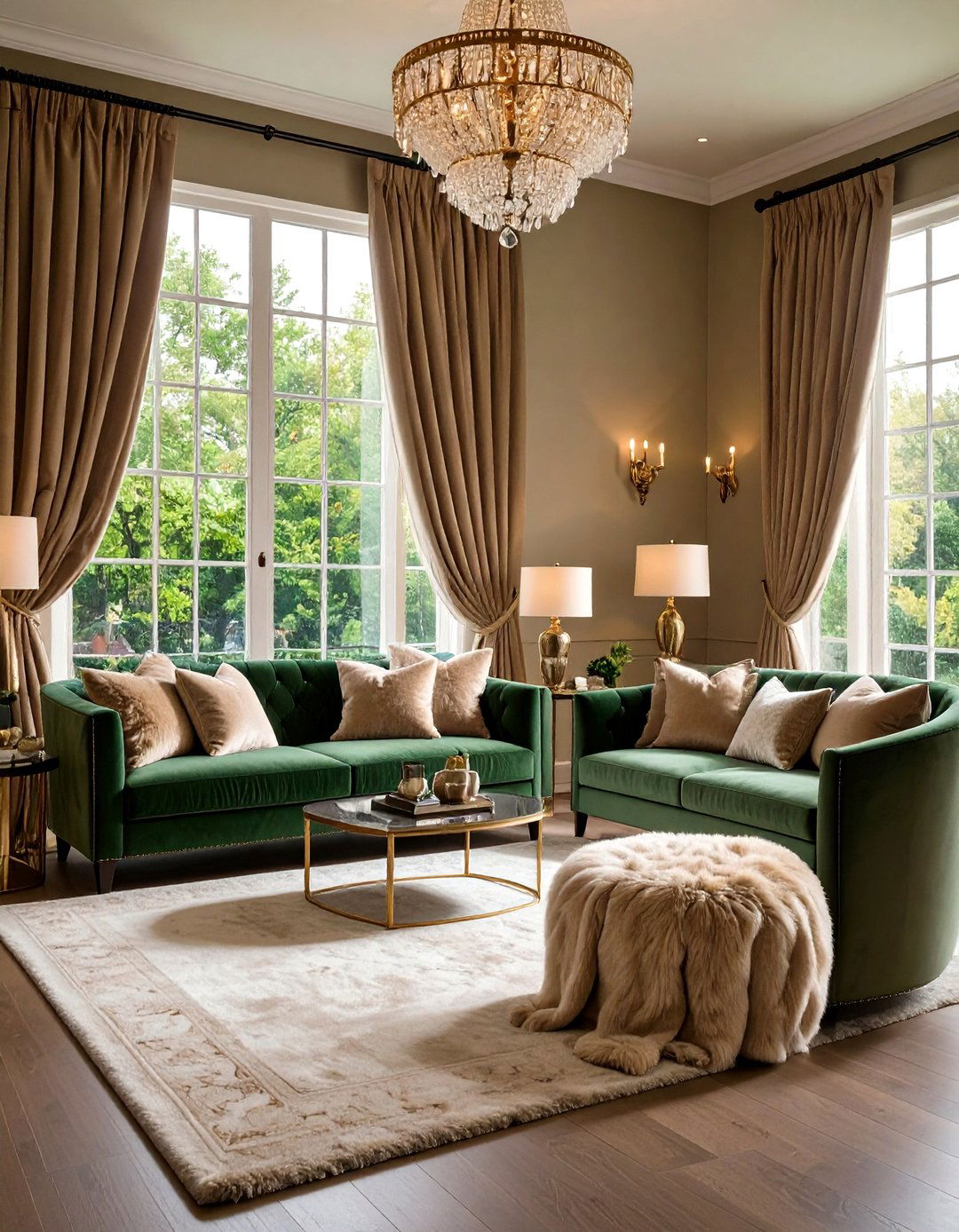
While taupe remains the starring hue, well-placed accent colors can punctuate the design. Deep terracotta, emerald green, or matte black accessories—think vases, throw blankets, and decorative trays—draw the eye and create focal points. Use these accents sparingly to maintain taupe’s calming effect; too many can disrupt the serenity that makes taupe rooms so inviting.
6. Selecting Furniture with Complementary Finishes
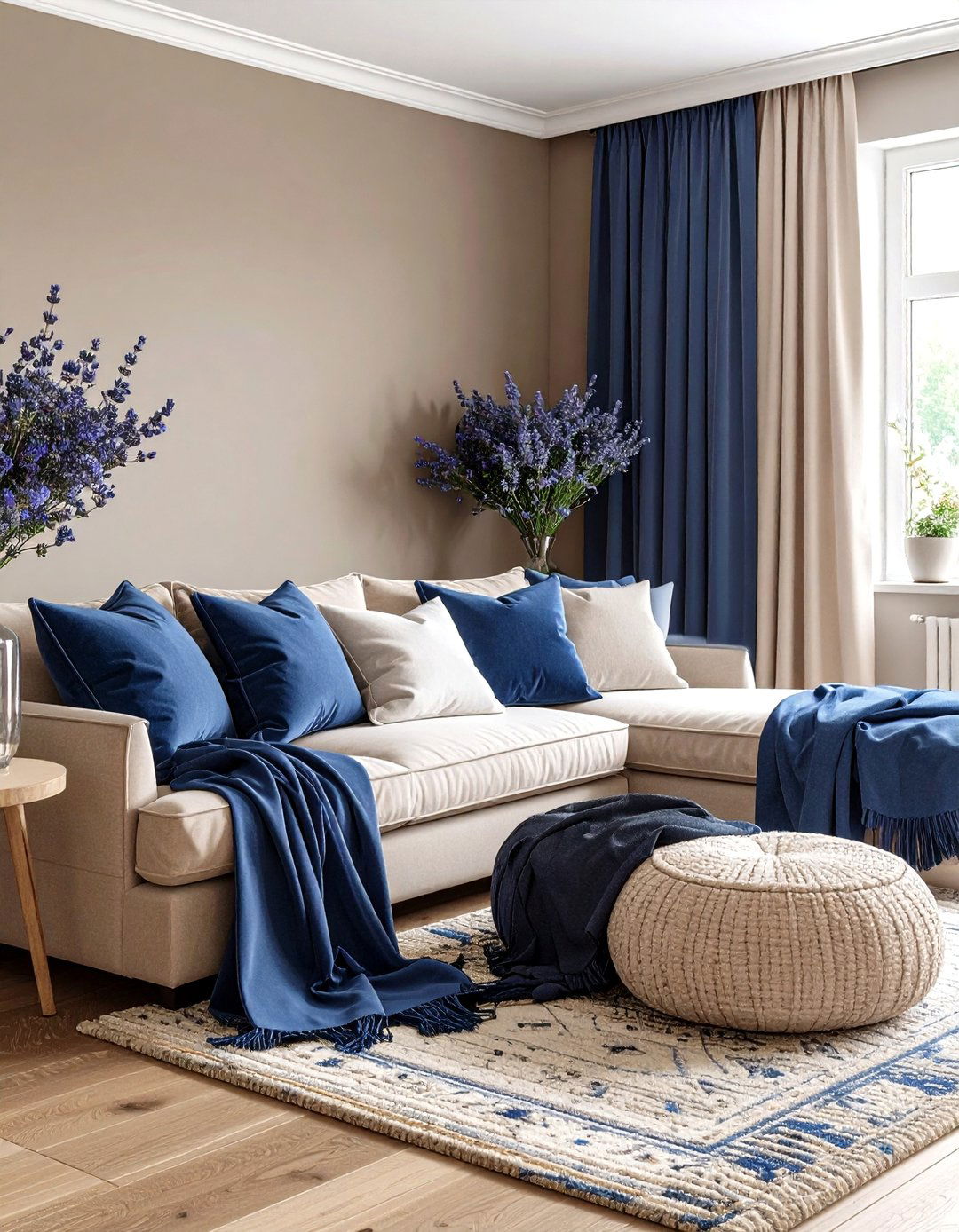
Choose furniture finishes that complement taupe’s undertones. Warm wood tones—such as walnut or oak—underline its brown facets, while lighter birch or maple highlight cooler gray notes. For a seamless modern look, opt for taupe-colored upholstery paired with metallic legs in brushed brass or matte black. Consistency in finish helps unify diverse pieces, contributing to a cohesive design narrative.
7. Elevating with Luxurious Textiles
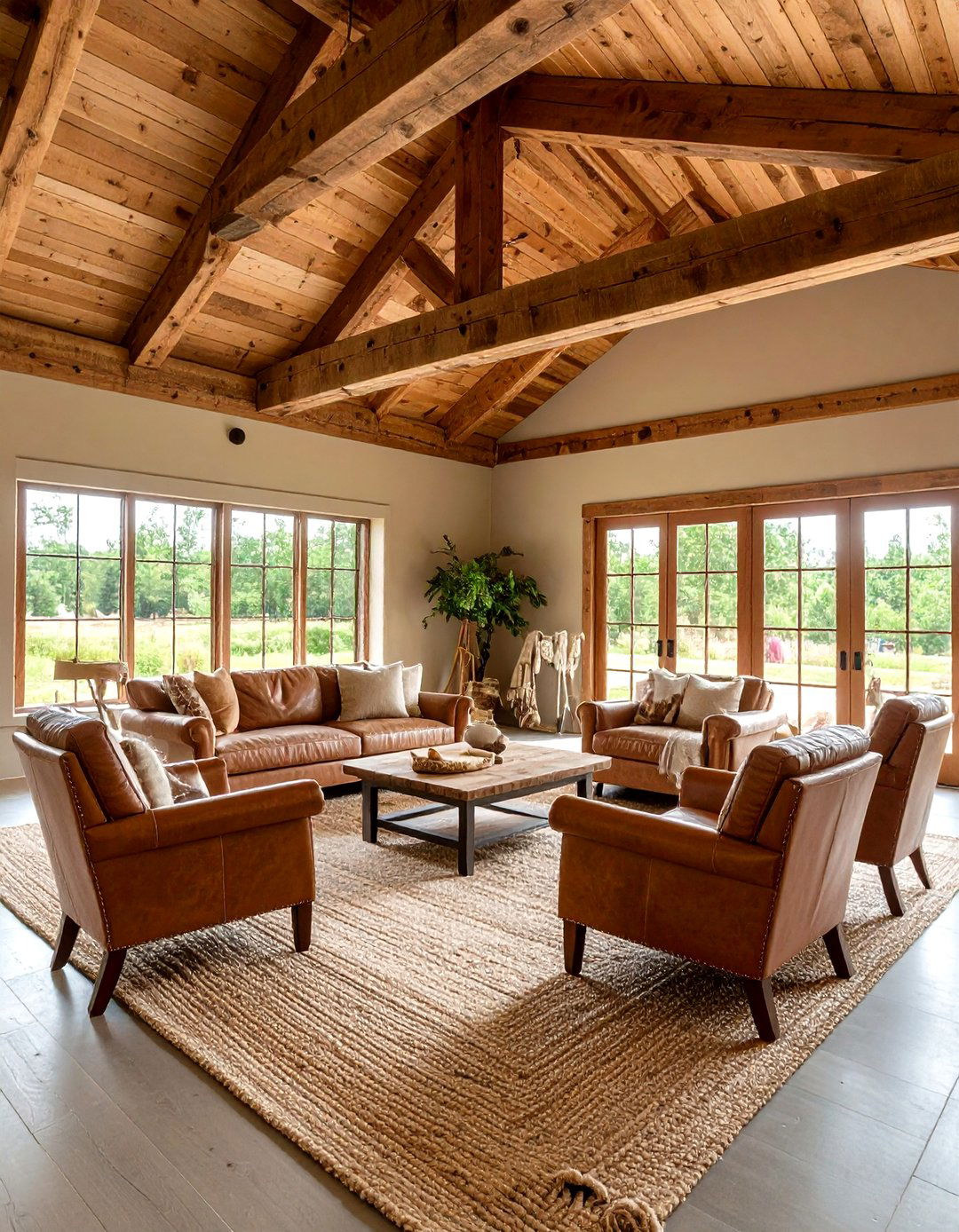
Introduce luxury through textiles: velvet curtains, silk cushions, or faux fur throws amplify taupe’s elegant side. Layer window treatments—a sheer linen panel with a heavier velvet drape—to create depth and softness. On seating, combine velvet pillows with chunky knit blankets for a balanced mix of sheen and warmth. These layered fabrics invite comfort while exuding upscale styling.
8. Balancing Wood Tones and Taupe
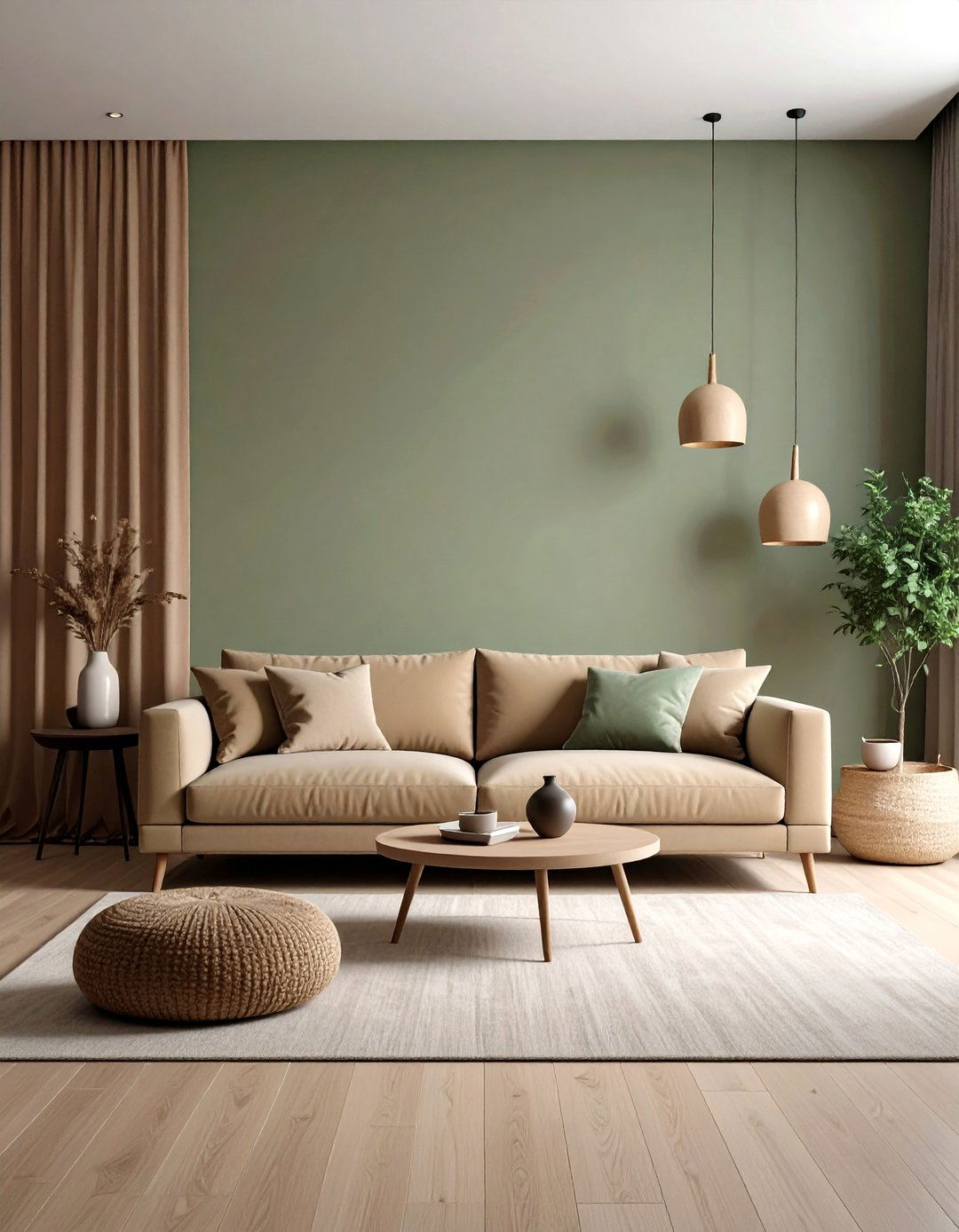
Not all wood tones pair equally with taupe. Cool taupes work best with ash or bleached woods, while warmer taupes harmonize with medium- to dark-toned woods like walnut or mahogany. Avoid overly red woods (e.g., cherry) in cooler taupe schemes, as they can clash with gray undertones. Consistency in wood finishes across furniture and built-ins helps maintain a unified look.
9. Integrating Metal Accents for Contrast
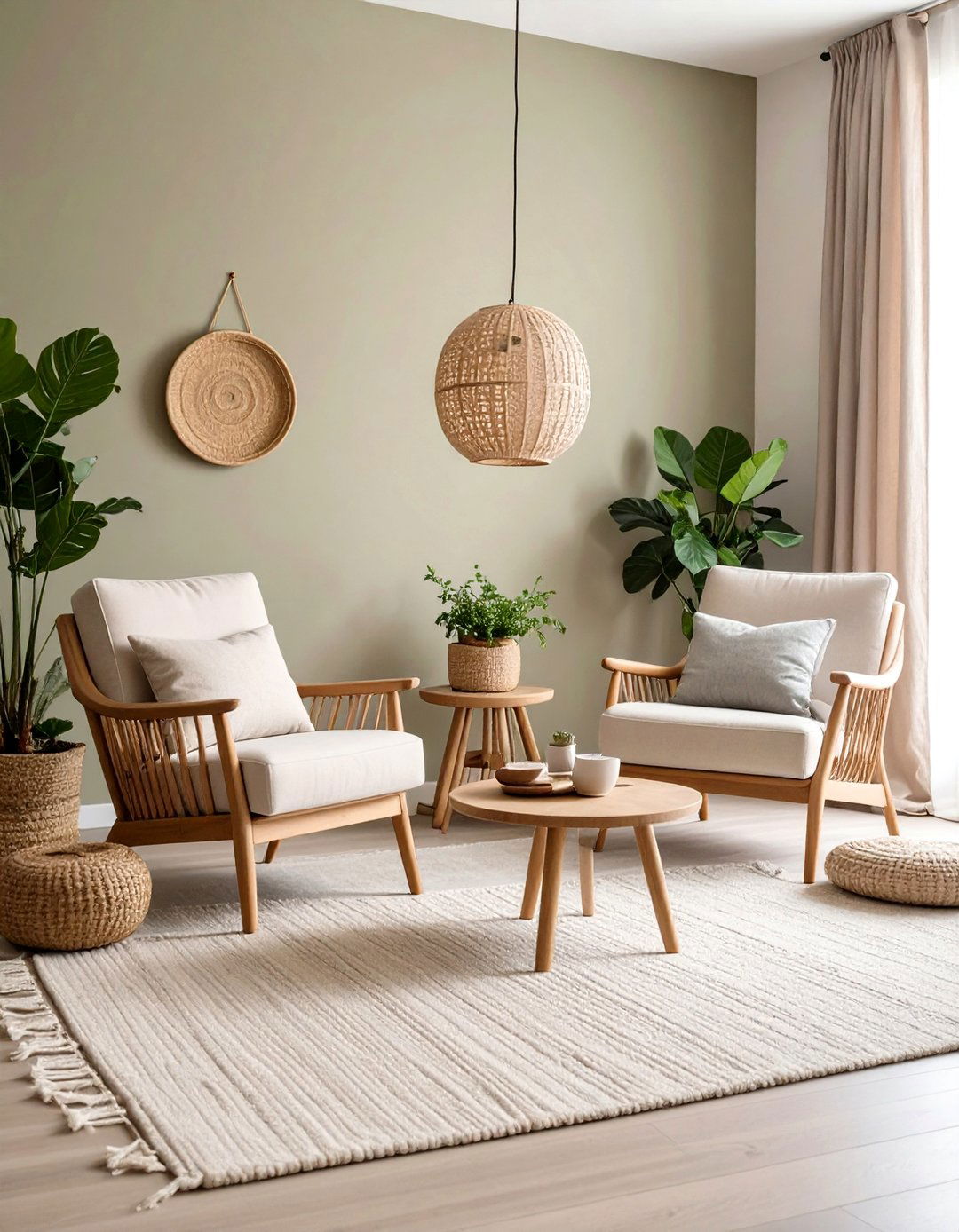
Metallic accents introduce subtle sparkle and modern edge. Brushed brass and antique gold enhance taupe’s warmth, while matte black or gunmetal highlight its cooler leanings. Consider metal-framed coffee tables, lamp bases, or mirror borders to punctuate the space without overpowering the neutral palette. These reflective surfaces also help bounce light, keeping the room feeling bright.
10. Introducing Patterned Accents

Patterns add visual intrigue without overwhelming the neutral scheme. Geometric rugs, ikat throw pillows, or subtle ombré curtains can enliven a taupe living room. Stick to patterns in complementary shades—taupe-on-taupe or taupe with white and charcoal—to ensure cohesion. Using pattern sparingly prevents the space from feeling busy, letting taupe’s serene quality shine through.
11. Showcasing Artwork and Wall Decor
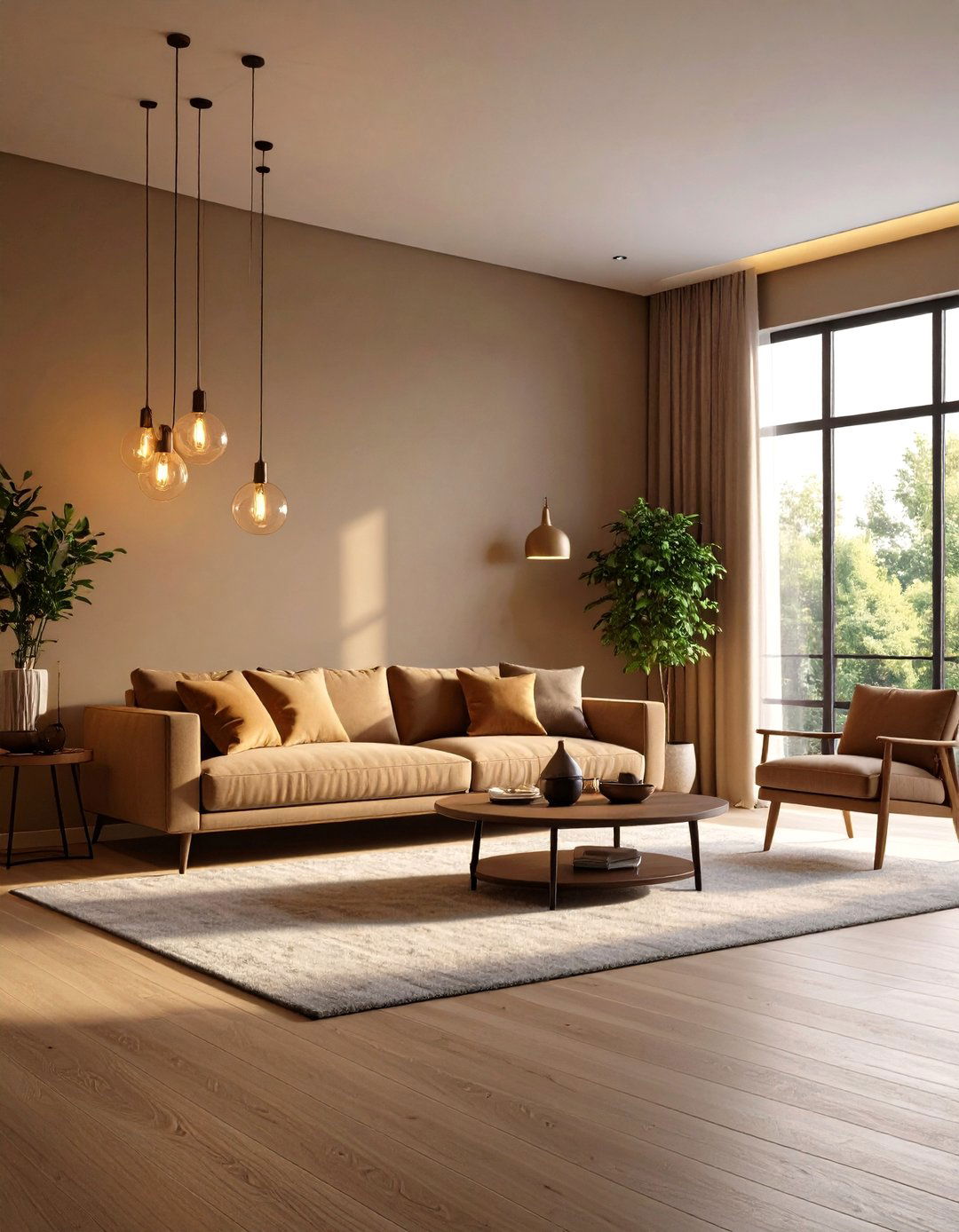
Artwork can be the focal point in a taupe room. Bold abstract pieces in contrasting hues—navy, burgundy, or forest green—stand out beautifully against taupe walls. For a more understated look, choose monochromatic prints or photography framed in slim black or natural wood. Gallery walls in mixed frames also break up expanses of taupe, adding personal flair and visual texture.
12. Designing Around a Statement Fireplace

A fireplace framed in stone or tile becomes a captivating anchor in a taupe living room. Natural stone mantels—limestone or slate—complement taupe’s earthy tone, while monochrome tile brings a modern touch. Flank the fireplace with built-in shelving painted the same taupe to maintain flow. Accessorize the hearth with woven baskets and sculptural elements to meld form and function.
13. Layering Neutrals for a Serene Vibe
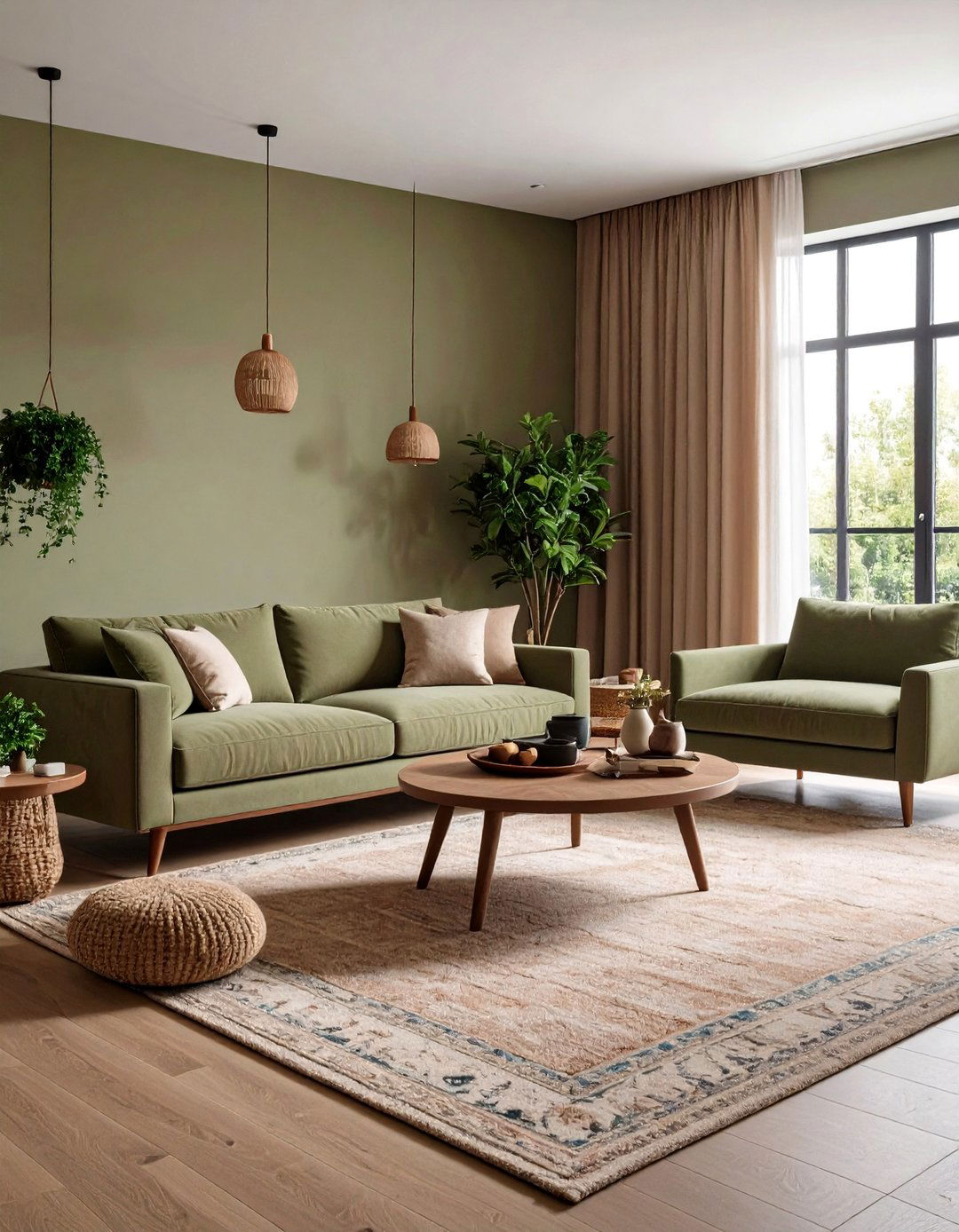
For an all-neutral scheme, layer varying shades of off-white, cream, and gray alongside taupe. Creamy rugs on light oak floors and dove-gray upholstery on accent chairs create subtle contrast while preserving calm. Incorporate natural textures—linen, cotton, and rattan—to break monotony. This harmonious palette amplifies taupe’s tranquil effect, ideal for minimalists and lovers of ‘quiet luxury.’
14. Crafting a Minimalist Taupe Sanctuary
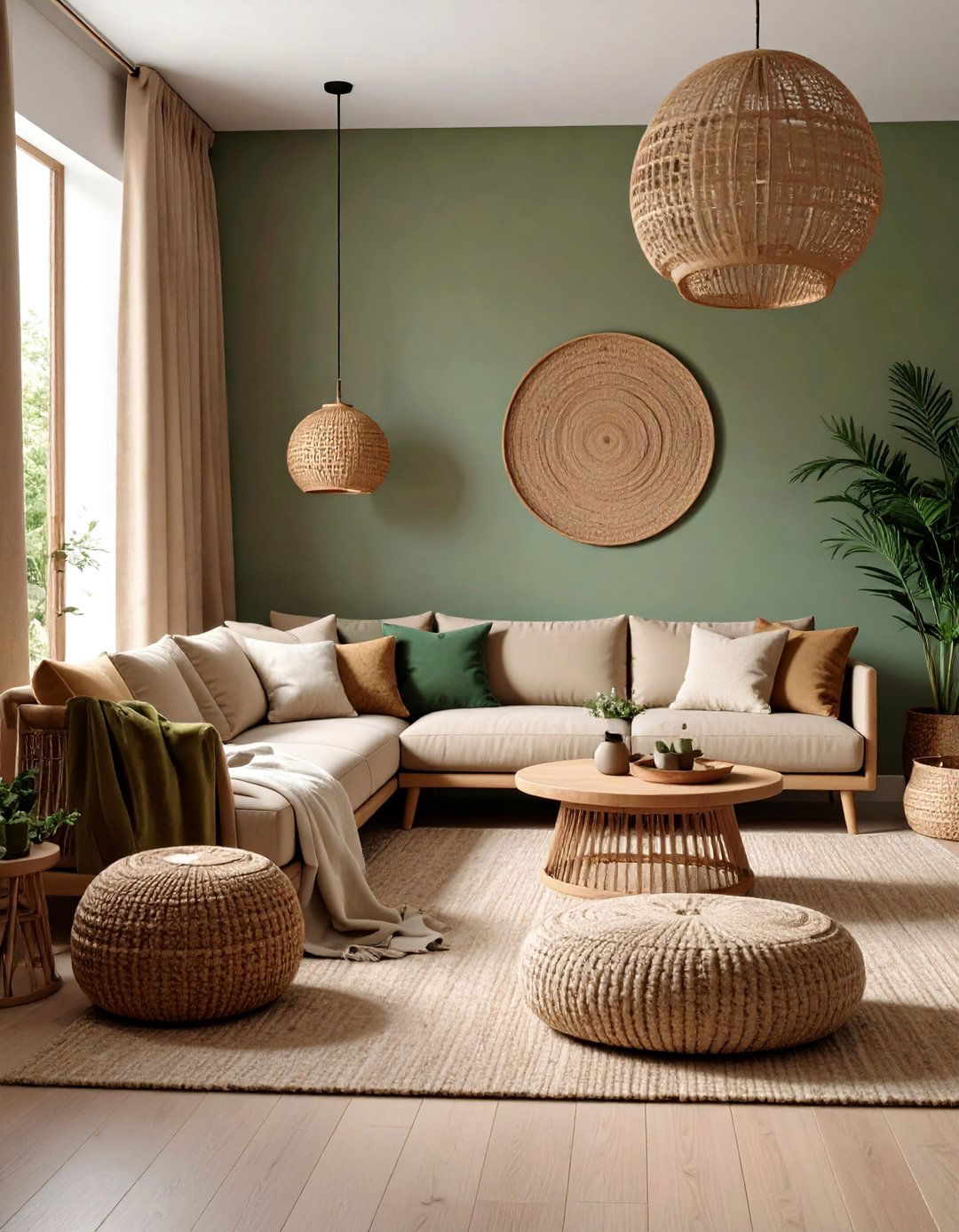
Minimalist interiors thrive on simplicity. Keep décor to a minimum: a streamlined sofa, a single piece of sculptural furniture, and uncluttered surfaces. Opt for paneling or shiplap painted taupe to add subtle architectural interest without color contrast. Use hidden storage solutions—built-in cabinets or floating shelves—to maintain the room’s clean lines and uncluttered feel.
15. Infusing Rustic Charm with Earthy Textures

Rustic elements accentuate taupe’s natural warmth. Exposed wood beams, a reclaimed wood coffee table, and distressed leather chairs introduce character and patina. Layer cowhide rugs or braided jute mats for added authenticity. Toss in artisanal pottery and woven baskets to complete the rustic narrative, ensuring each piece tells a story while blending seamlessly with taupe’s cozy undertones.
16. Achieving Modern Luxury with “Quiet” Accents
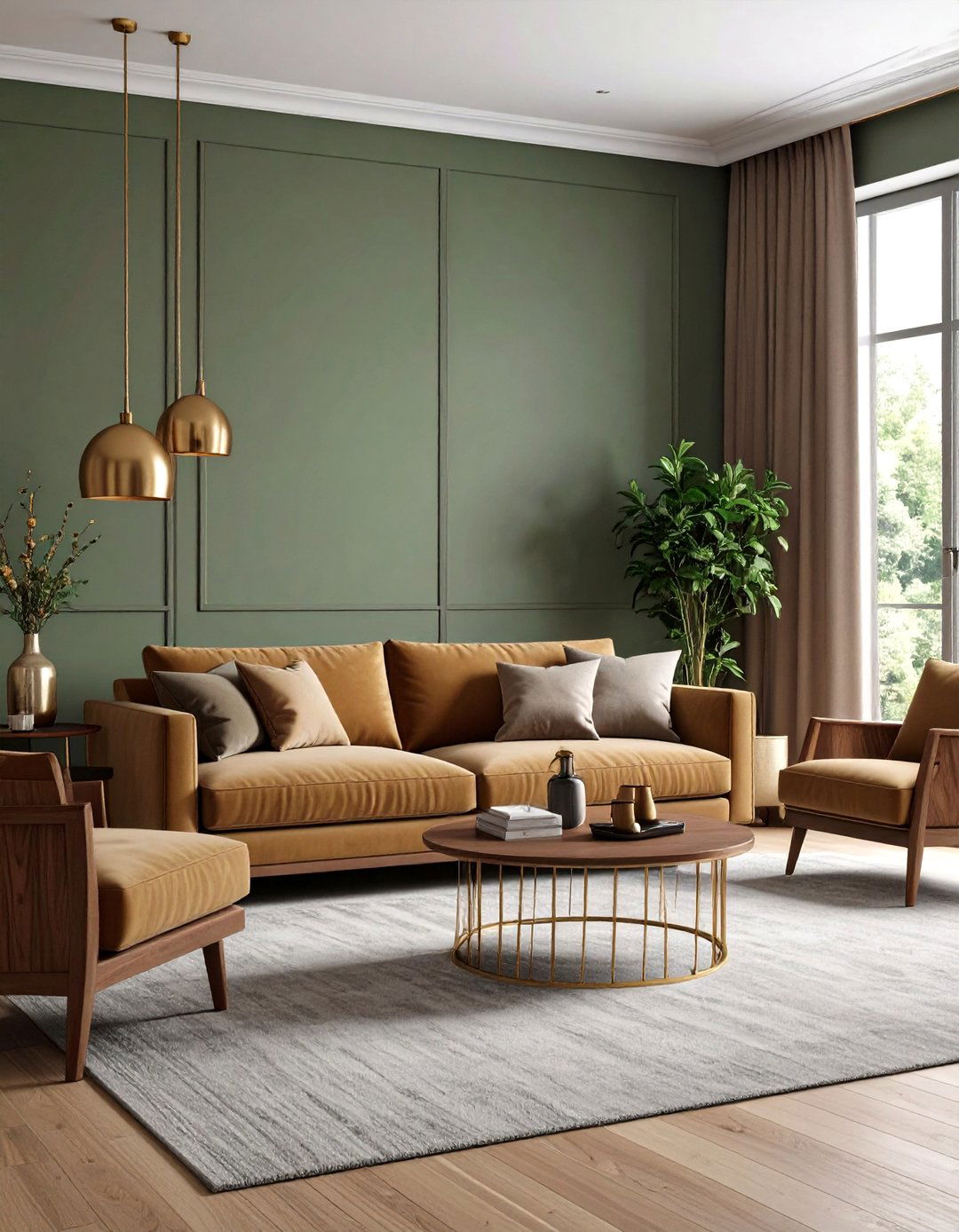
For a luxe yet understated look, embrace the ‘quiet luxury’ trend: select high-quality materials and streamlined silhouettes. Taupe velvet sofas with low profiles, marble-topped side tables, and subtle metallic trim create a refined atmosphere. Keep décor minimal and invest in statement lighting—such as a sculptural chandelier—to blend opulence with restraint, letting taupe’s sophisticated neutrality shine.
17. Maximizing Small Spaces with Taupe
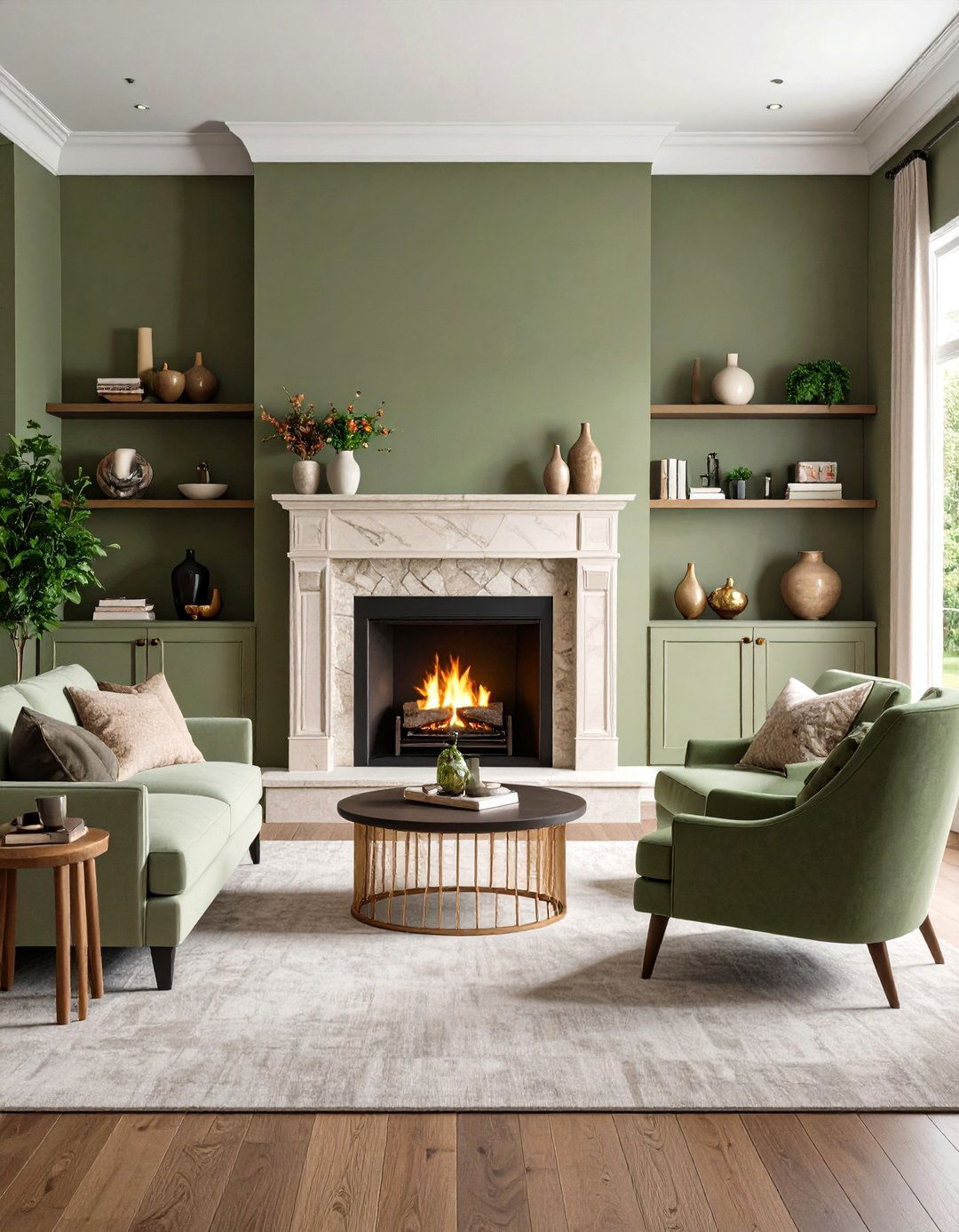
In compact living rooms, taupe walls open up the space without feeling stark. A light taupe shade on walls and ceiling visually raises room height, while monochromatic furnishings prevent visual clutter. Use mirrored accents and glass coffee tables to reflect light and maintain openness. Opt for multifunctional furniture—like storage ottomans—to streamline the room, ensuring that taupe’s soothing presence makes the space feel larger and calmer.
18. Creating Seamless Open-Concept Flow

In open-plan homes, taupe unifies adjacent zones. Paint walls and architectural details—columns, built-ins, trim—the same taupe hue to blur boundaries. Anchor each zone with area rugs and distinctive furniture arrangements, but maintain the taupe base for cohesion. Cohesive trim and cabinetry finishes further reinforce the seamless transition between living, dining, and kitchen areas.
19. Incorporating Biophilic Elements for Freshness

Taupe’s neutral backdrop pairs beautifully with greenery. Large-leafed plants—monstera, fiddle leaf fig, or bird of paradise—pop against taupe walls, introducing life and color. Use woven planters or terracotta pots to echo taupe’s earthiness. A living wall or clustered potted arrangements soften edges and enhance air quality, creating a calming, nature-infused retreat.
20. Adapting Taupe for Seasonal Transitions
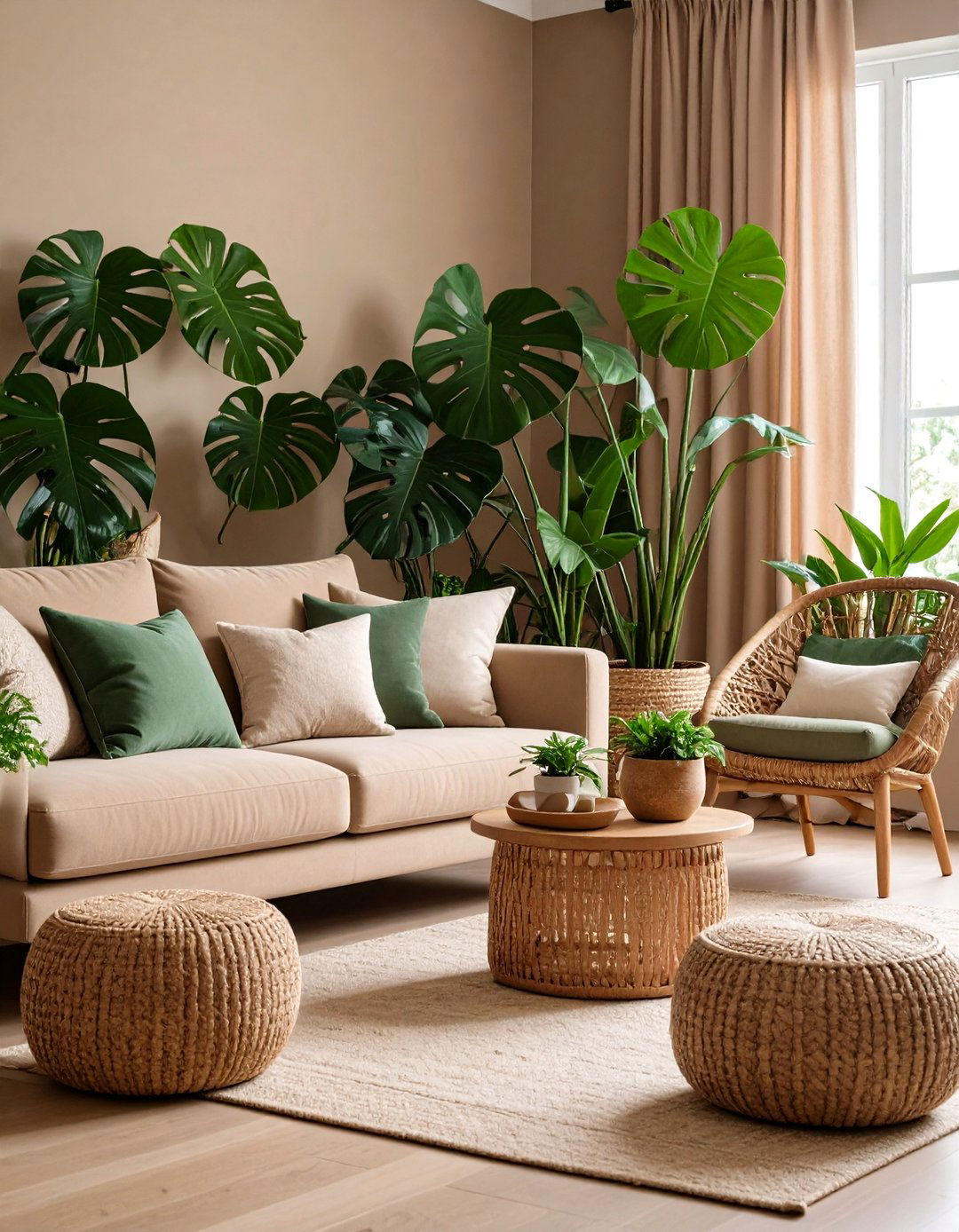
One of taupe’s greatest strengths is its adaptability. In warmer months, swap in light linens and wicker accents to evoke breezy summer vibes. As temperatures drop, introduce velvet throws, wool rugs, and candlelit lanterns to amplify coziness. Adjust accent colors—soft corals in spring, deep burgundy in fall—to reflect seasonal palettes while keeping taupe as your constant, versatile foundation.
Conclusion:
Taupe living rooms offer a harmonious blend of warmth and elegance, serving as a dynamic canvas for countless styles. By experimenting with textures, lighting, color pairings, and carefully chosen accents, you can craft a space that feels both timeless and personalized. From minimalist sanctuaries to rustic retreats, these 20 ideas demonstrate taupe’s remarkable versatility. Embrace this understated hue to create a living room that delights the senses and adapts effortlessly to your changing tastes and seasons.



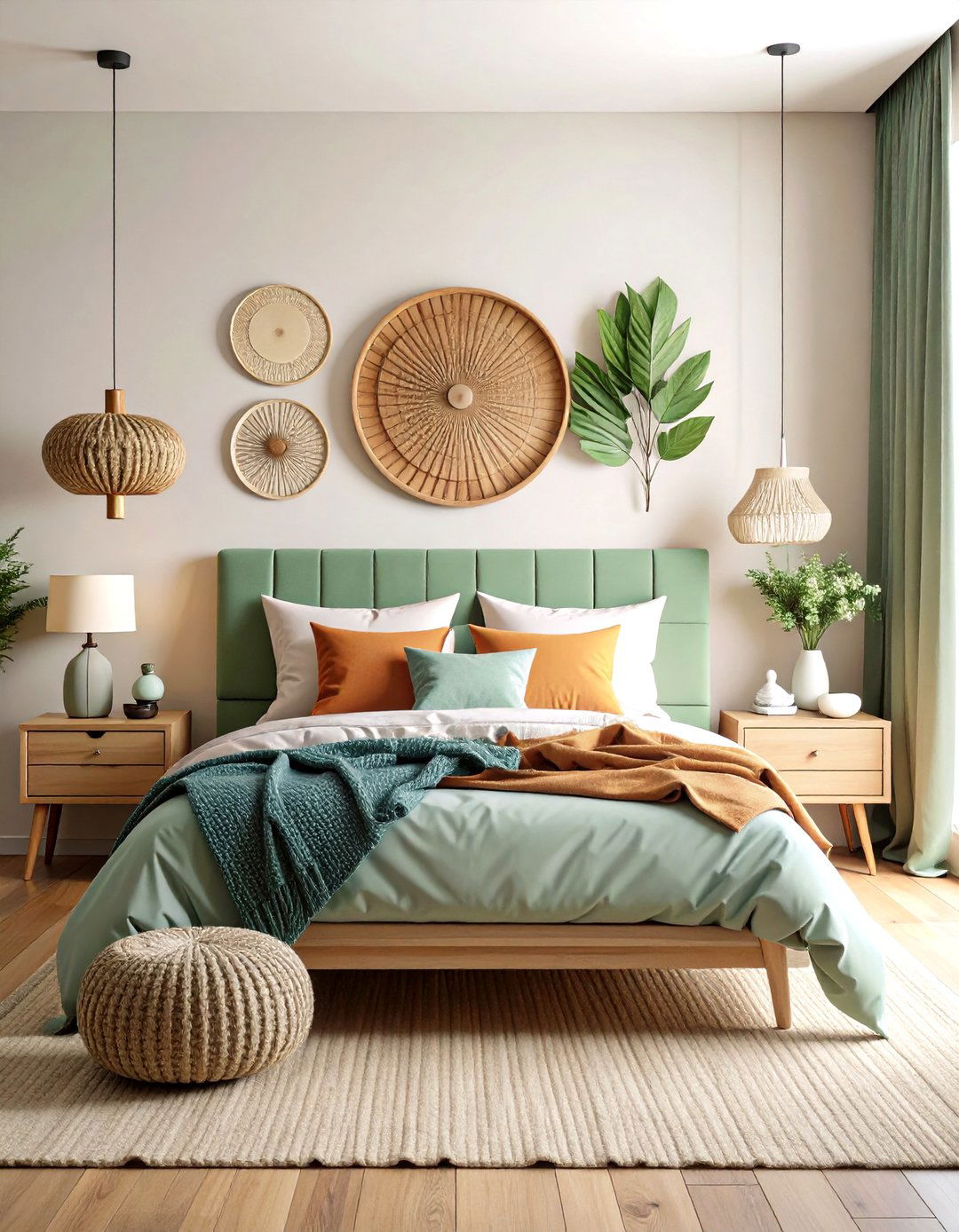
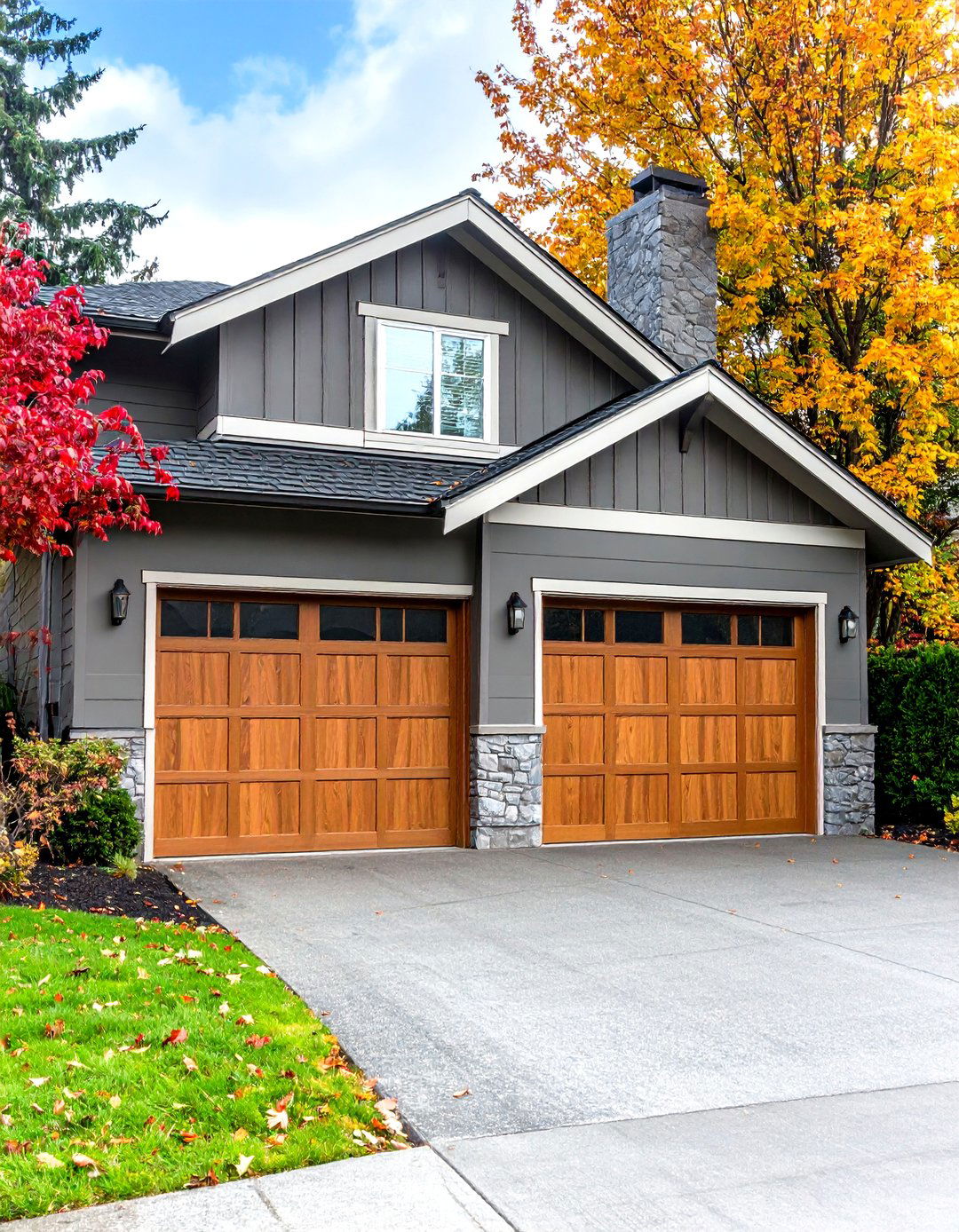

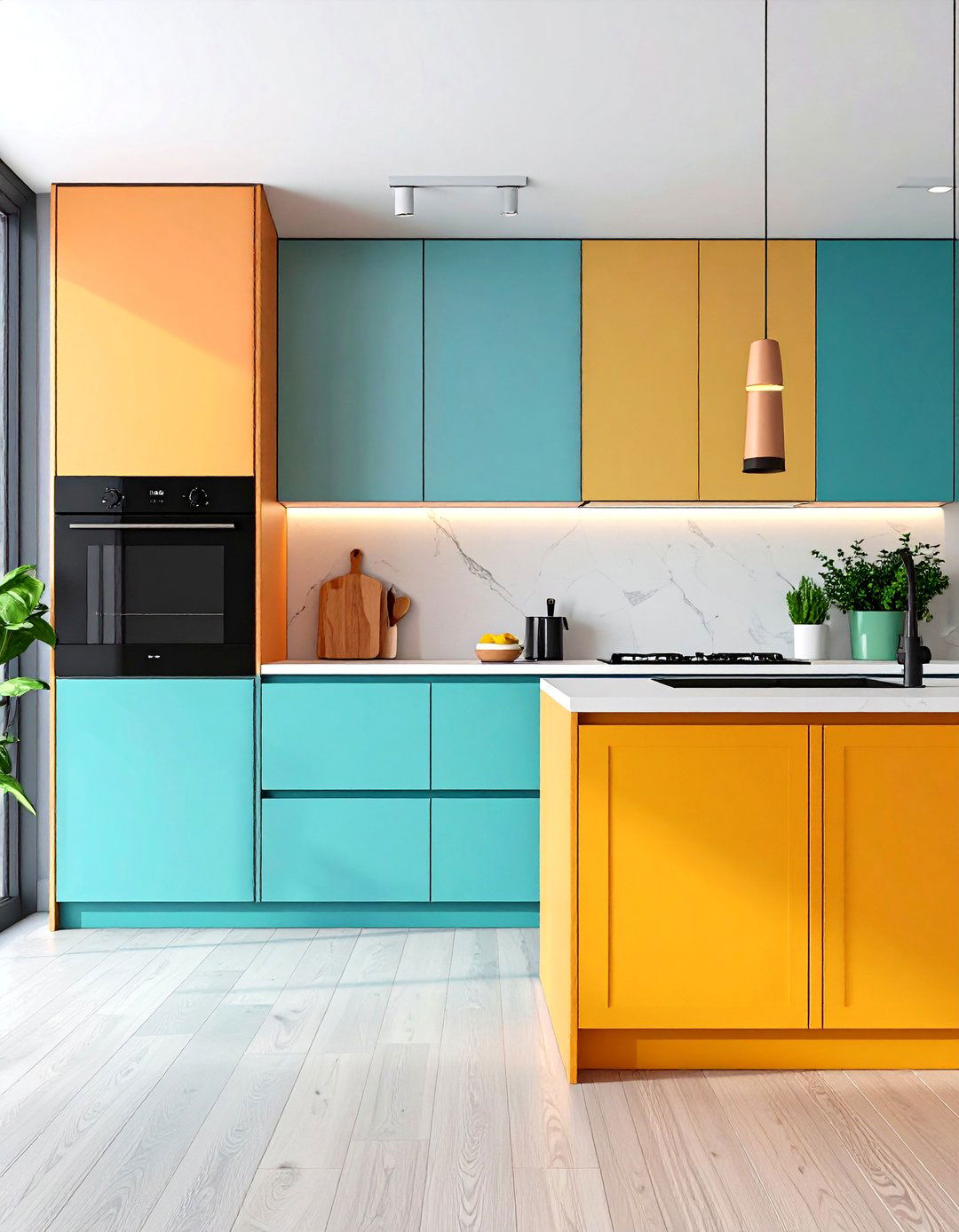

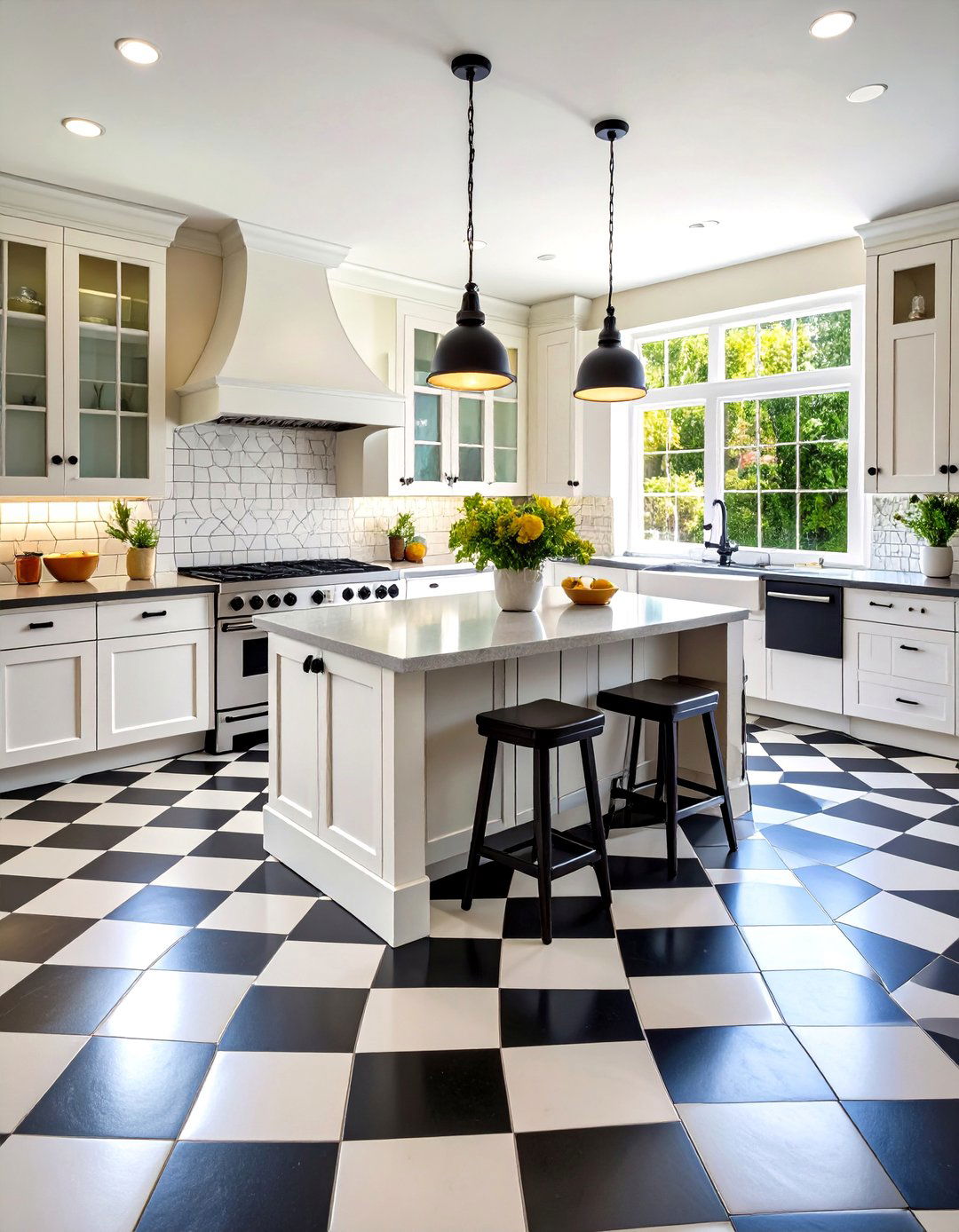
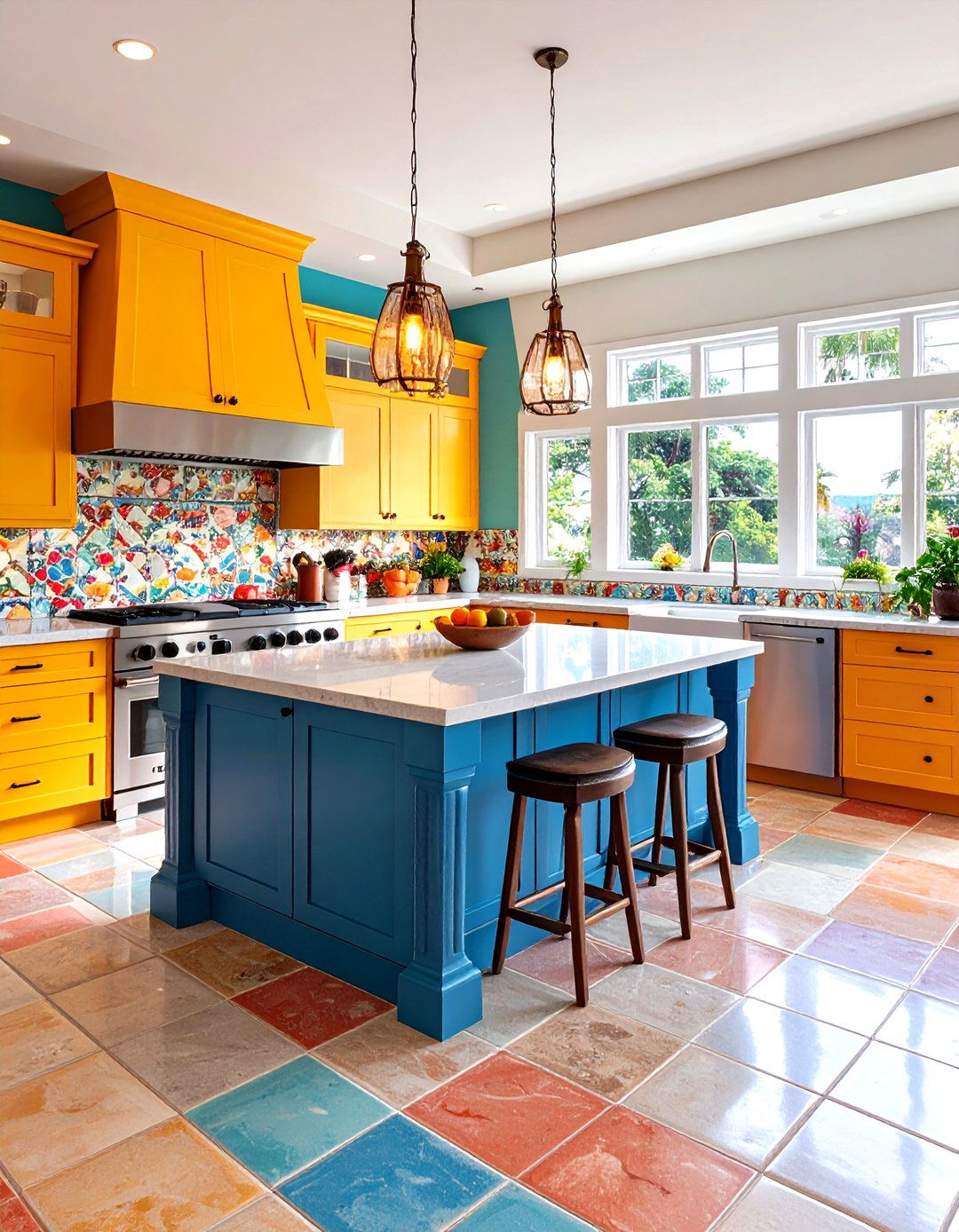
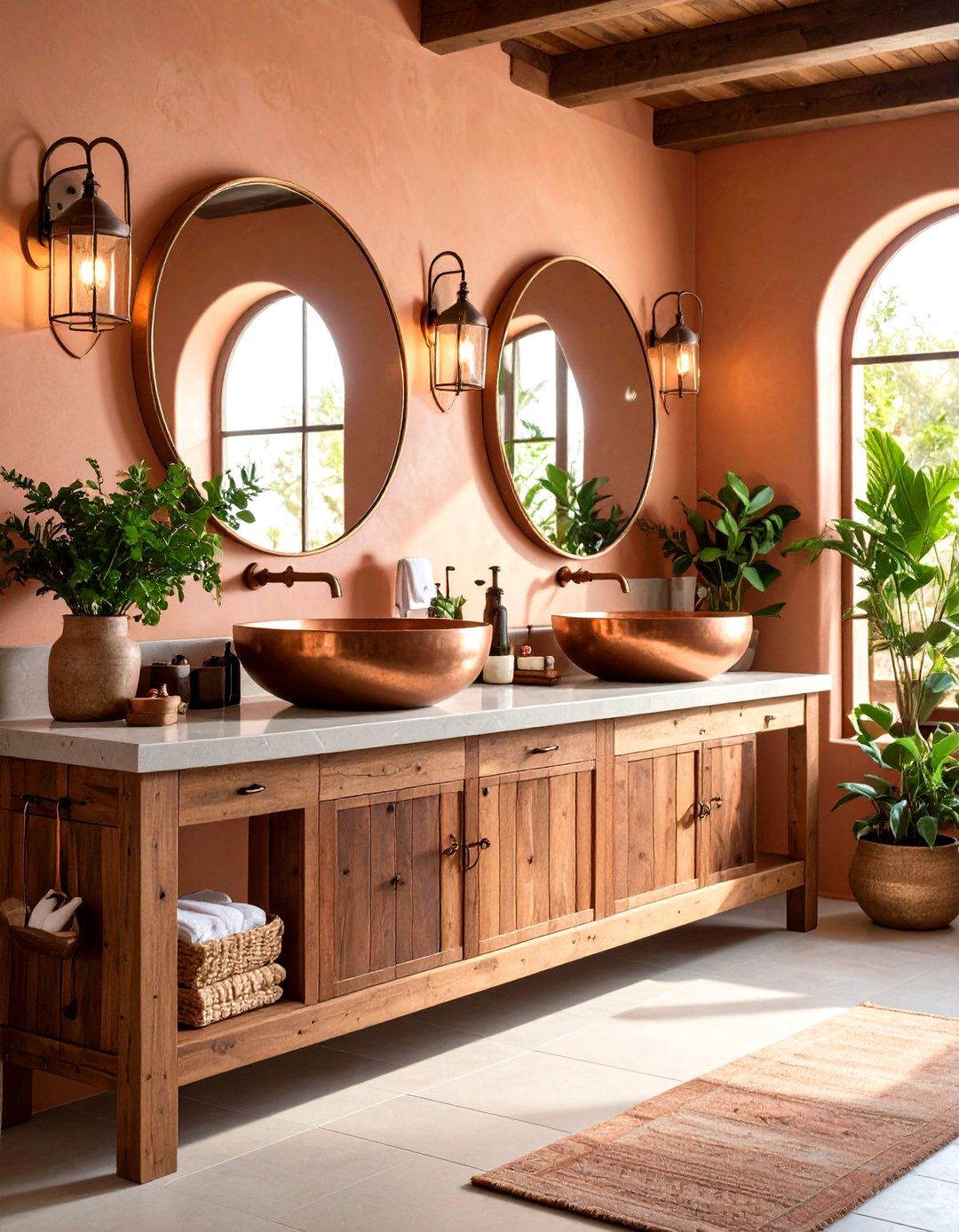
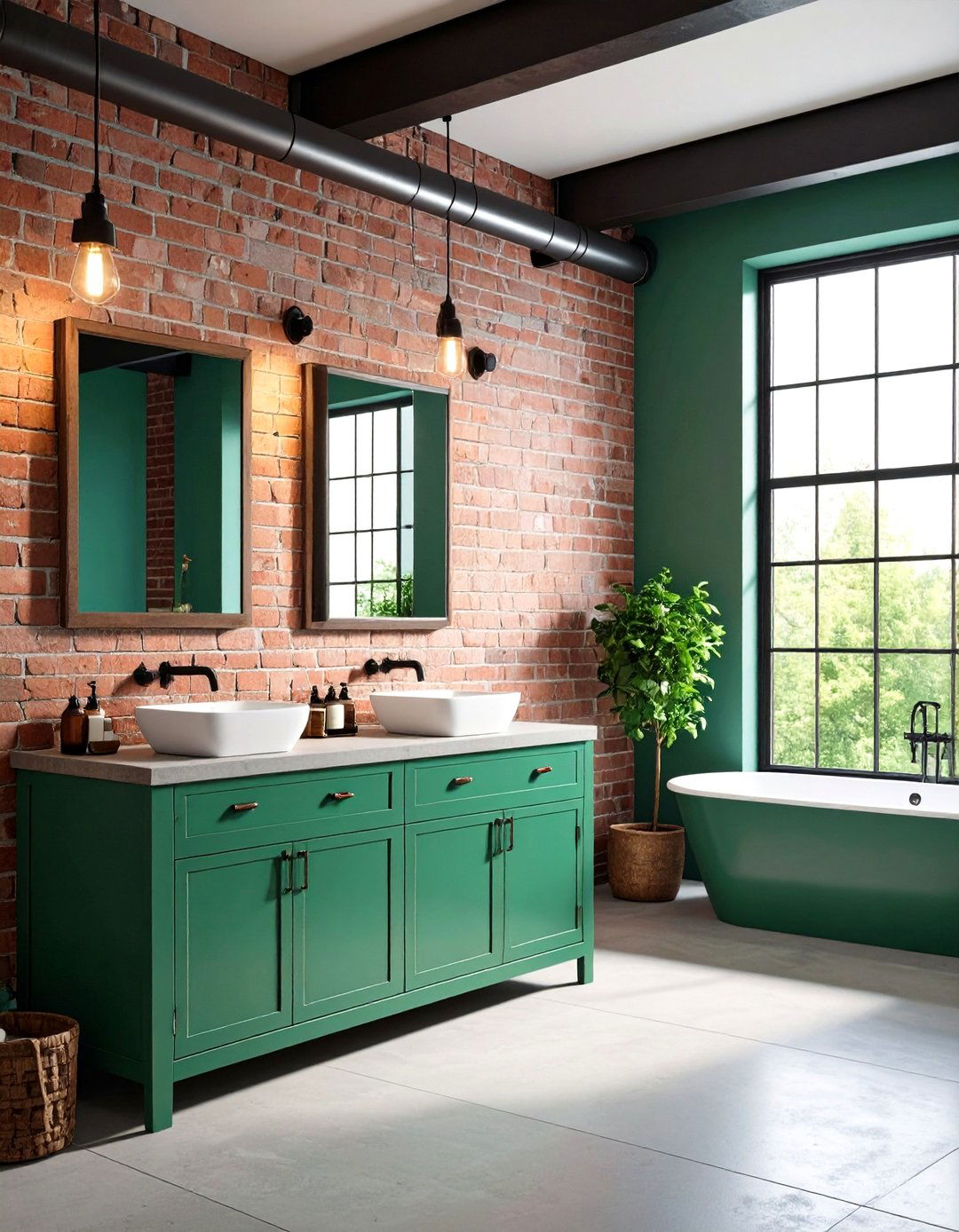
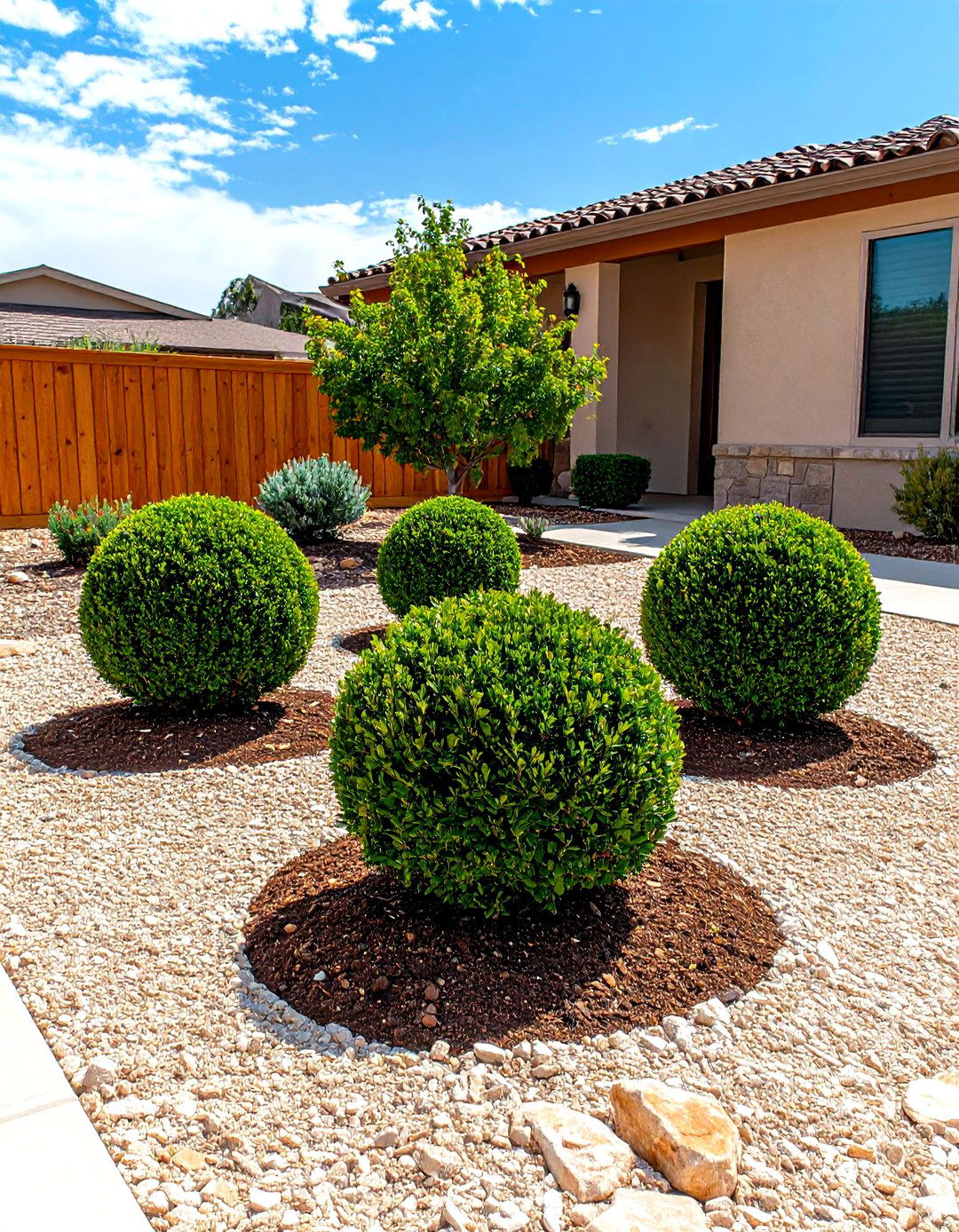
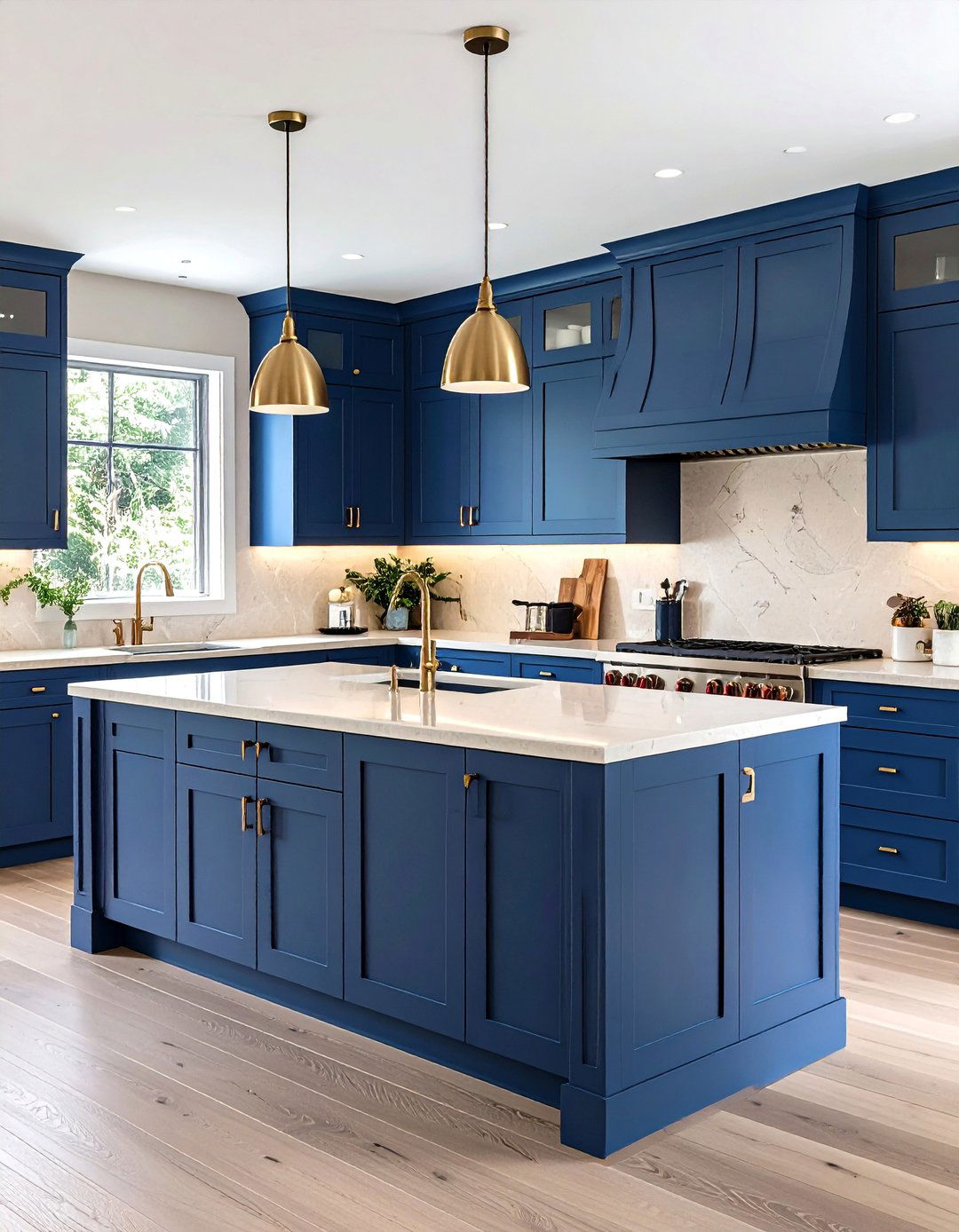

Leave a Reply